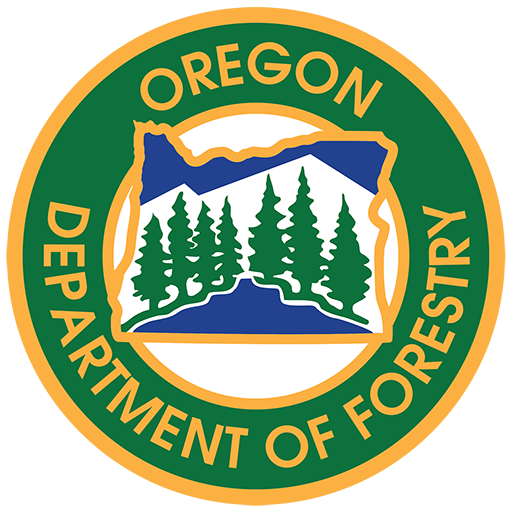SALEM, Ore. – Autumn rains may have
ended Oregon’s wildfire season but not the risk of floods and debris flows
following in their wake. That is why a working group of state and federal
agencies have released a new playbook.
The playbook will aid local officials in finding resources to help prevent or
cope with potentially catastrophic wildfire after-effects.
ended Oregon’s wildfire season but not the risk of floods and debris flows
following in their wake. That is why a working group of state and federal
agencies have released a new playbook.
The playbook will aid local officials in finding resources to help prevent or
cope with potentially catastrophic wildfire after-effects.
 |
| Above: After intense wildfires, burned soils may be less able to absorb runoff, raising the risk of flooding or debris flows. |
Wildfires burned more than 856,000
acres this year across all of Oregon, well above the 10-year average of approximately
500,000 acres, according to the Oregon Department of Forestry’s Chief of Fire
Protection Doug Grafe.
acres this year across all of Oregon, well above the 10-year average of approximately
500,000 acres, according to the Oregon Department of Forestry’s Chief of Fire
Protection Doug Grafe.
“High intensity wildfires can destroy protective
vegetation and alter soil so it is less able to absorb rainfall and snowmelt,”
said Grafe. “After such fires, there can be an increased risk of flooding or debris
flows.”
vegetation and alter soil so it is less able to absorb rainfall and snowmelt,”
said Grafe. “After such fires, there can be an increased risk of flooding or debris
flows.”
According to the U.S.
Geological Survey, landslides (also known as debris flows) cause about $3.5
billion (in 2001 dollars) in damage in the U.S. each year, and claim between 25
to 50 lives. A prime example is the debris flow that hit Montecito in Southern
California in January of this year. Just weeks after the Thomas Fire burned the
hills above the town of about 9,000, a debris flow swept through, killing more
than 20 people.
Ryan Cahill, hydraulic
engineer with the U.S. Army Corps of Engineers, said his agency worked with
several partners to compile and complete the guide, including:
engineer with the U.S. Army Corps of Engineers, said his agency worked with
several partners to compile and complete the guide, including:
·
Natural
Resources Conservation Service
Natural
Resources Conservation Service
·
Oregon
Department of Forestry
Oregon
Department of Forestry
·
Oregon
Emergency Management
Oregon
Emergency Management
·
Oregon
Department of Land Conservation and Development
Oregon
Department of Land Conservation and Development
·
U.S.
Forest Service
U.S.
Forest Service
·
U.S.
Geological Survey
U.S.
Geological Survey
“Federal and state partners already
work together to suppress wildfires, so it was natural for us to come together
to prepare a guide for community leaders on what to do after wildfires,” said
Cahill. “The playbook we produced explains what to do to reduce the risk from
floods and debris flows, identifies the resources available to help do that,
and where to find those resources,” said Cahill.
work together to suppress wildfires, so it was natural for us to come together
to prepare a guide for community leaders on what to do after wildfires,” said
Cahill. “The playbook we produced explains what to do to reduce the risk from
floods and debris flows, identifies the resources available to help do that,
and where to find those resources,” said Cahill.
Among steps Cahill said
at-risk communities can take, one is designating in advance where evacuation
centers will be, including animal-friendly locations where pets and livestock
can receive care. Alert systems, such as reverse 9-1-1 calls, should also be
organized and periodically tested.
at-risk communities can take, one is designating in advance where evacuation
centers will be, including animal-friendly locations where pets and livestock
can receive care. Alert systems, such as reverse 9-1-1 calls, should also be
organized and periodically tested.
All government entities and
critical emergency organizations, such as hospitals, utilities, food banks and
schools, should know their roles in a community flood or debris flow emergency.
Then be equipped and prepared to carry out those plans.
critical emergency organizations, such as hospitals, utilities, food banks and
schools, should know their roles in a community flood or debris flow emergency.
Then be equipped and prepared to carry out those plans.
Although the playbook is
intended for elected local officials and emergency managers, individuals can
help protect themselves as well.
intended for elected local officials and emergency managers, individuals can
help protect themselves as well.
“Property owners and those living
and working near rivers where catastrophic fires have occurred should be aware
of their level of risk and take appropriate preparedness actions,” said Oregon Office
of Emergency Management Director Andrew Phelps. “This includes having
‘two-weeks ready’ preparedness supplies handy, signing up for emergency
notification systems where you live, and reviewing insurance coverage to make
sure your home is protected for hazards like flooding and landslides.”
and working near rivers where catastrophic fires have occurred should be aware
of their level of risk and take appropriate preparedness actions,” said Oregon Office
of Emergency Management Director Andrew Phelps. “This includes having
‘two-weeks ready’ preparedness supplies handy, signing up for emergency
notification systems where you live, and reviewing insurance coverage to make
sure your home is protected for hazards like flooding and landslides.”
The playbook can be accessed at:
# #
#
